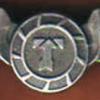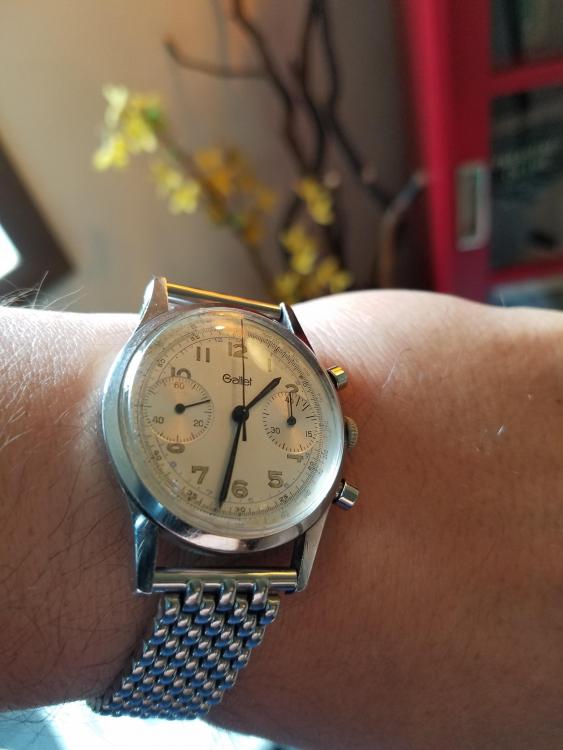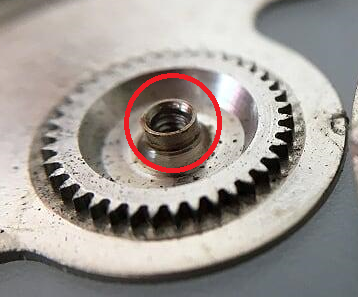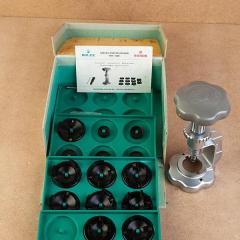Leaderboard
Popular Content
Showing content with the highest reputation on 08/27/19 in all areas
-
Start with an old pocket watch many are very much alike to a watch movement just bigger. Learn what the parts are called, strip it right down and put it all back together, do this many times so you can do it in your sleep. This will help you in using you eyeglass, tweezers and watchmakers screwdrivers. Don’t get hold of any fusee pocket watch movements they are completely different. When you have achieved all with your pocket watch move to a simple Gents watch, just the movement, no calendar and certainly not an automatic.2 points
-
Before strip down, I would give it a full manual wind and make a record of how long it runs on bench. Expectedly runs more than 30hrs, the question is how much longer. Repeat the same with the movement out of the case, next raise the seconds hand and repeat, repeat by removing the remaining hands and the dial plate, day disk.....continue with min train bridge with seconds hand put back on. You are eliminating possible faults as you strip the movement down. The game is to find the point movement quits stopping at, then you have found the location of the fault. This approach is worth mastering and useful particularely for cases when complete strip down is not on the agenda. Fault finding as you strip the movement down makes sense, to strip down, clean reassemble oil and face the fault is the shoot first ask question later stralogy. As for amplitude, I always apply diesel fuel or kerosene to escape teeth and observe the little machine fly. This usually eliminates the, suspect bent pivot story. Best Regards joe2 points
-
Yes those auto systems are quite different if you're used to 2824/2892 stuff. Amazingly robust though, I rarely need to do more than clean them. The date mechanisms from that era will really throw you for a loop, but generally instantaneous change and again they work and work and work. Good to take photos as they can be unintuitive in function.2 points
-
Probably a shock protection jewel (guessing Incabloc for Omega) that shifted with a shock and didn't reseat correctly. A hairspring hangup would almost certainly have more drastic timing results. That it stops at that specific area on the seconds hand could be a slightly damaged tooth, that normally wouldn't show up but with the distress at the balance might be more sensitive.2 points
-
WRT shims. VWatchie..I've always thought that shims were a band-aid solution and a manufacturer should have the capability to reduce the length to spec in-house. Probably as JDM mentioned it could be due to production variance. Better to have it slightly too long than too short? One thought is that they could have done that (shims) to build some life into the movement.. ie you could re-finish the ends of the pivot sometime in the watches lifetime and at that point doing away with the shim (or use a thinner shim) leaving you with good endshake? Ah well... unless someone who has worked in a Soviet watch factory shows up we'll probably never know. Anilv2 points
-
If you’re like me, taking apart you first ETA calibre 2472 and feeling somewhat intimidated after having removed the case back lid looking down on the automatic works, then you will likely appreciate this post. By the way, except for the oscillating weight itself, the automatic winding device is identical for the following calibres: ETA 2450, ETA 2451, ETA 2452, ETA 2453, ETA 2454, ETA 2472, and ETA 2474. My only other experience of ETA’s automatic winding devices comes from calibre 2824-2. So, looking down on the oscillating weight of the ETA 2472 and not seeing a screw holding it attached to the automatic device framework, made me think the parts had somehow been riveted together and probably were inseparable. Having removed and looked at the back of the automatic device framework I could see that the oscillating weight was indeed attached with a screw or at least something that reminded me of a screw. Its slot was very thin, and it sat in a large jewel! No way I was going to try to remove it without knowing for sure it could be done and how it should be done, especially as this watch wasn’t mine but my brother’s who’d trusted it to me for an overhaul. My first thought then was to try to remove all wheels without touching the oscillating weight. After having looked at the device for a good long while, I realized I wouldn’t be able to remove a single wheel before separating the oscillating weight from the framework. So, I decided to be patient (hardest part of watch repairing), put the parts away for now and research the Internet. I Googled “eta 2472 how to remove oscillating weight”. The first hit was “Untitled - OM-Mechanics”, a PDF document. Well, I wasn’t feeling very optimistic but lo and behold, there it was, in full detail! Anyway, the PDF is pretty poorly scanned, and it isn’t all that easy to read the part numbers, so I decided to make my own picture guide for disassembling the automatic device of this ETA calibre 2472, and that’s what follows next: (Eventually, I’ll publish a complete ETA calibre 2472 service picture walkthrough. If interested, you’ll find a link to it in a future post in this thread.)1 point
-
I am Coelho, and I now send a cordial hug to all watch lovers! I am Portuguese, and I sincerely hope to contribute so that we all benefit from the exchange of knowledge! Best regards.1 point
-
Everyone, Thank you so much for your responses. This is EXACTLY the kind of information and advice I was hoping to get. Nucejoe, I will absolutely follow your recommended due diligence to try and ascertain the issues before full disassembly. This is an area that I have struggled with in the past and is really the reason for starting this thread in the first place. Right now, based on everyone's recommendations, I'm trying to slow down, put a plan together, gather all the necessary materials (such as the exact oils that Omega recommends on their service chart) and take it step by step. I will definitely be updating this post with pics and progress as I process through this repair, but it may be a little bit of time before I'm ready to tackle this completely. Again, thanks for you for your encouragement and support! Chris1 point
-
1 point
-
"Sudden" change of performance, points to unseated or misaligned endstone due to unlocked or broken shock spring which tops the checklist and for most part is visual so is very clearly adviced by master Nicklesilver, considering little explanation on amplitude and power reserve, I gathered the relevent discussion is left to students. Regards joe1 point
-
As always, I enjoy reading what the pros suggest. Thanks, Nucejoe! I will guess that a cap jewel is unseated or misaligned. As far as the second hand stopping at 3 seconds, follow the above. A slow process but you will get to learn and master the proper way to find fault. Regards.1 point
-
Just wanted to let you all know the bag and pegwood worked perfectly. Cheers1 point
-
Hi Maz I have up loaded the TZ Glossary of watch parts It will help you to identify all the parts and where they fit. Its a generic glossary so therefore non specific. TZIllustratedGlossary.pdf1 point
-
I use a Nikon L320 that are not over priced, can record on it too. Has a Macro Function and takes nice closeups. I bought a overhead stand, which was about £30-40, as use it for taking pictures of old documents, for local/family history.1 point
-
This one of those faults that are not easy to resolve without close inspection. I would first look at the behaviour of the H/Spring is it breathing evenly. It could just be some dust/dirt that has attached to the spring after it was dropped. If not it is about removing from the case and stripping / cleaning and inspecting as you go.1 point
-
VWAtchie Must say very nice work as usuall, a real treat, keep up this good work!1 point
-
To add to my post above, if you have tools which can cut the correct angle on the bottom of the automatic bridge this will also close up the clearance, in fact this is better but acheiving the correct angle is crucial. Anilv edit.. just realised yours has a jeweled hole.1 point
-
Since all watches work in similar ways .I would tell you to get a few Russian movements. Learn the ins and outs on something you don't mind breaking. I am in no way trying to diminish them but non working ones can be bought all day long for about one dollar a piece.1 point
-
If there is excessive up and down play in the rotor you need to replace 51-498 and the gear which is a press fit into the rotor. Bodge alert!! You can also address this problem to some extent by reducing the height of this post circled below. Only a little bit mind or you risk the rotor hitting the main-plate. If this happens you will need to remove some metal from the bottom of the rotor, usually the edge but in some cases even on the inner portions. Anilv1 point
-
Howdy, mouse! If the seconds hand is stopping at the same point, you’ve got some friction in the power of that hand, it’s pinion, wheels or pivots. Could be as simple as something becoming unseated while it was josseled. But it definitely sounds like it could benefit from a break down and cleaning. It would be good practice, too. You can do this!! Just take pictures during disassembly. Let us know how it comes out. And if you have any questions during, stop and come back here. Sent from my iPad using Tapatalk1 point
-
Nivada chrono GMT,s are rare and expensive pieces. Be careful with it. Perhaps should get all set up for pix and read up on them. Get data sheet.1 point
-
As for the Slava,they are ok, but they seem to have weak balance staffs .Stay away from the day/date slava , overly complicated,engineered like they were trying to avoid patent infringement.Poljots can be good runners, but they seem to have poor metalurgy in the keyless works.1 point
-
That is what I used. Don't forget to demagnetize the buggers. I used to find stuff I lost months ago.1 point
-
I let the screw find a strong magnet. You are sure to get some bonus too, other screws, washers ...1 point
-
No need for having multiple sources to suffer parts size variations. Parts are made in batches afterwhich the same machine is reconfigured for another part or another step on the same batch. True in the old times of mechanical stops as well as in CNC of today. An error during reconfig, a larger tool wear there, temperature variations and you may be making parts significantly different. Very old watches were made practically by hand so to fit each part to another. Russians probably had decent machines but onerous production targets, impossible to impose strict tolerances so if the problem was correctable at assembly, so be it.1 point
-
Or is it simply they use the balance cock on more than one caliber and the shim lets them do this?1 point
-
I often wonder about that too. Surely if the manufacturing process was well controlled, then there would be no need for them. Perhaps their original intention was to allow for thinner and thinner shims at each service, as the pivot ends wear, but that is just speculation on my part. What I do know is that they represent one more thing for me to ping into a parallel dimension, or simply forget to refit, risking damaging the jewels and pivots in the process, so perhaps they are simply intended as a trap for the uninitiated.1 point
-
I am only a collector too but I will buy the best I can get if affordable....for most of my tools I switched from Chinese to Swiss tools pretty quickly1 point
-
You need to be good with lhe piercing saw and micro files. Try on scrap dial to get an idea.1 point
-
You mean Diashock, and I assume of the two legs type. Either use a single set of tweezers, slightly fit one side first then the other. Otherwise file and hollow a pegwood stick to match the size and proceed as in my video below. However I recommend that one learns to do that with tweezers, to develop dexterity for this and other tasks.1 point
-
And exactly when did necessary enter into a reason to purchase yet another watch when we already have multiples? As old fashioned as it sounds, I use my blinkin' phone for just that. Any social networking is still done the old fashioned way, one handshake at a time while making eye contact. If I allowed need to dictate my watch purchases, I would still own one Timex watch. Yeep! I just took an quick inventory and I'm far too embarrassed to post that number publicly.1 point
















